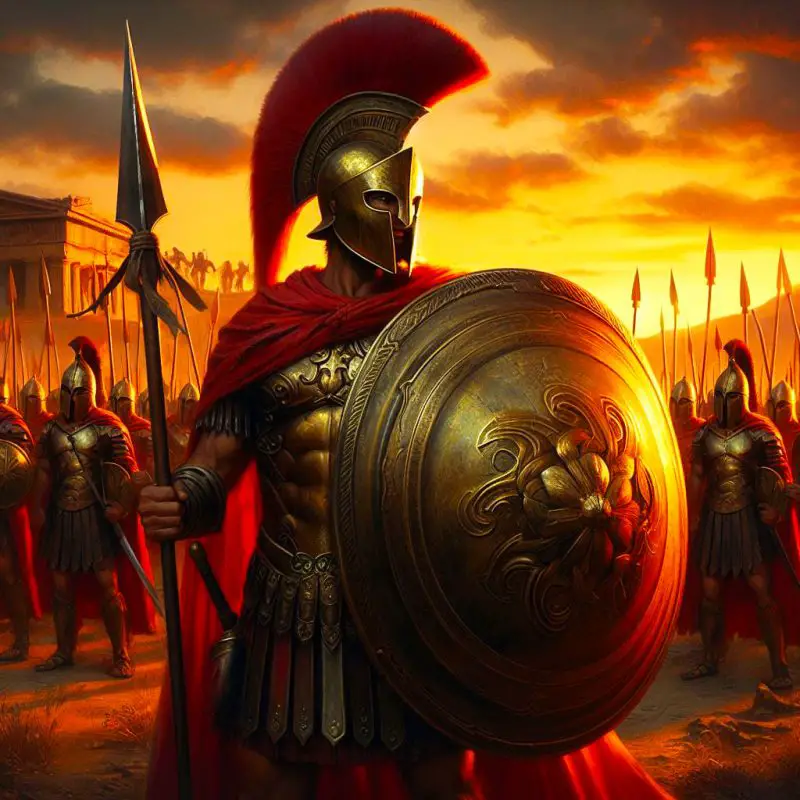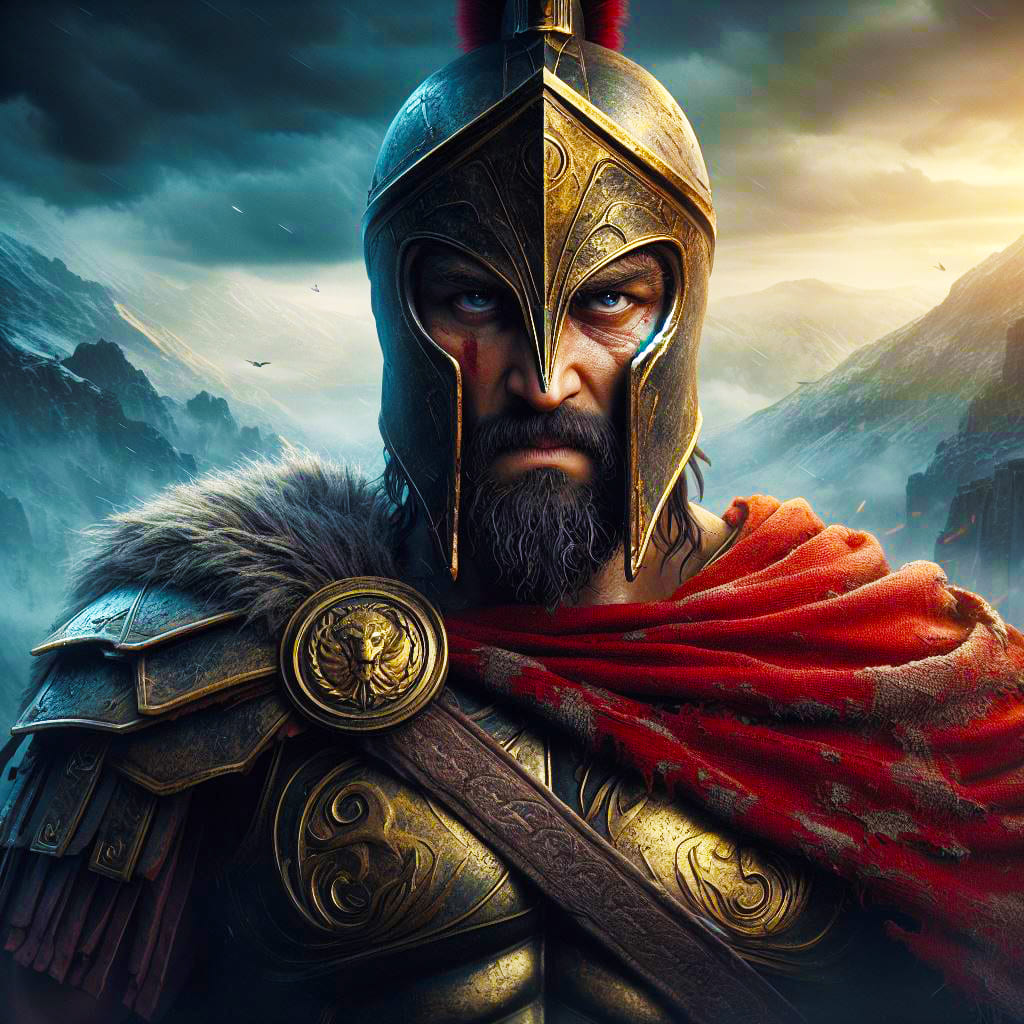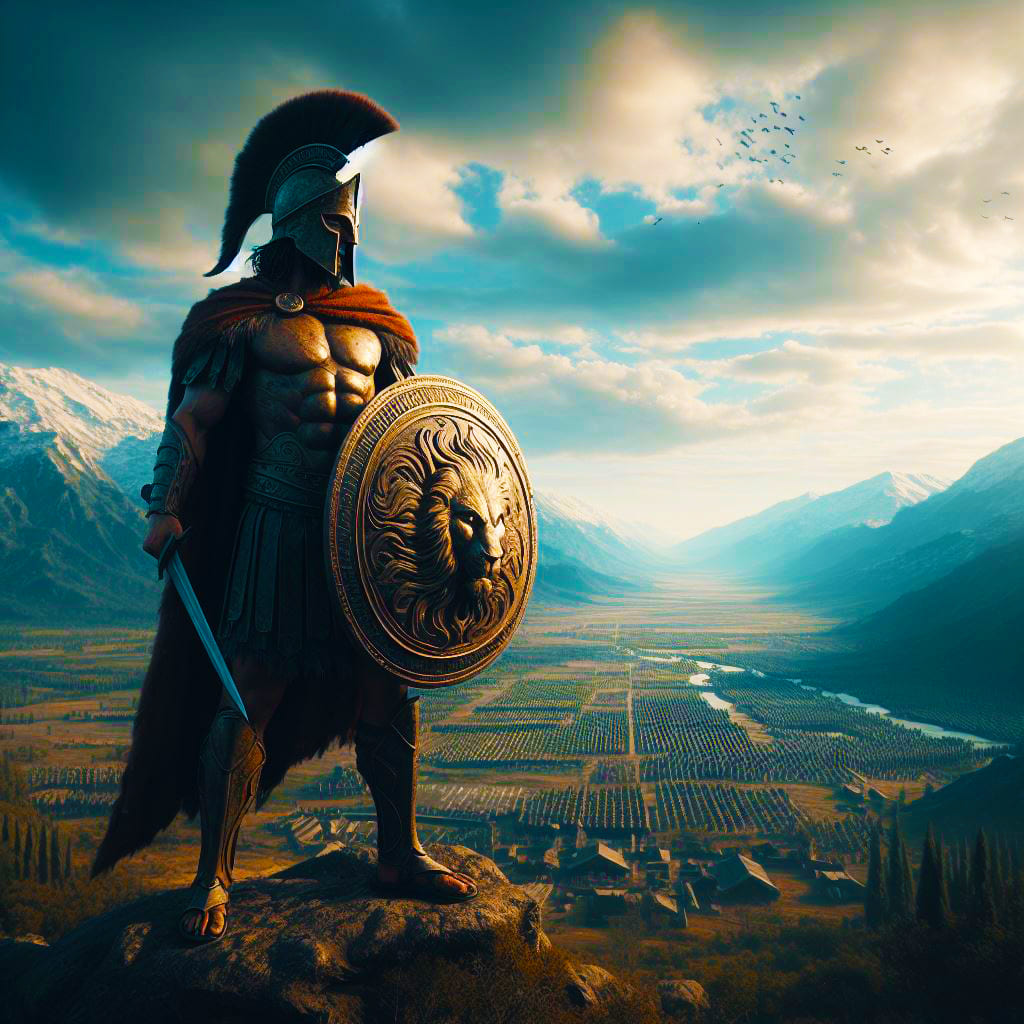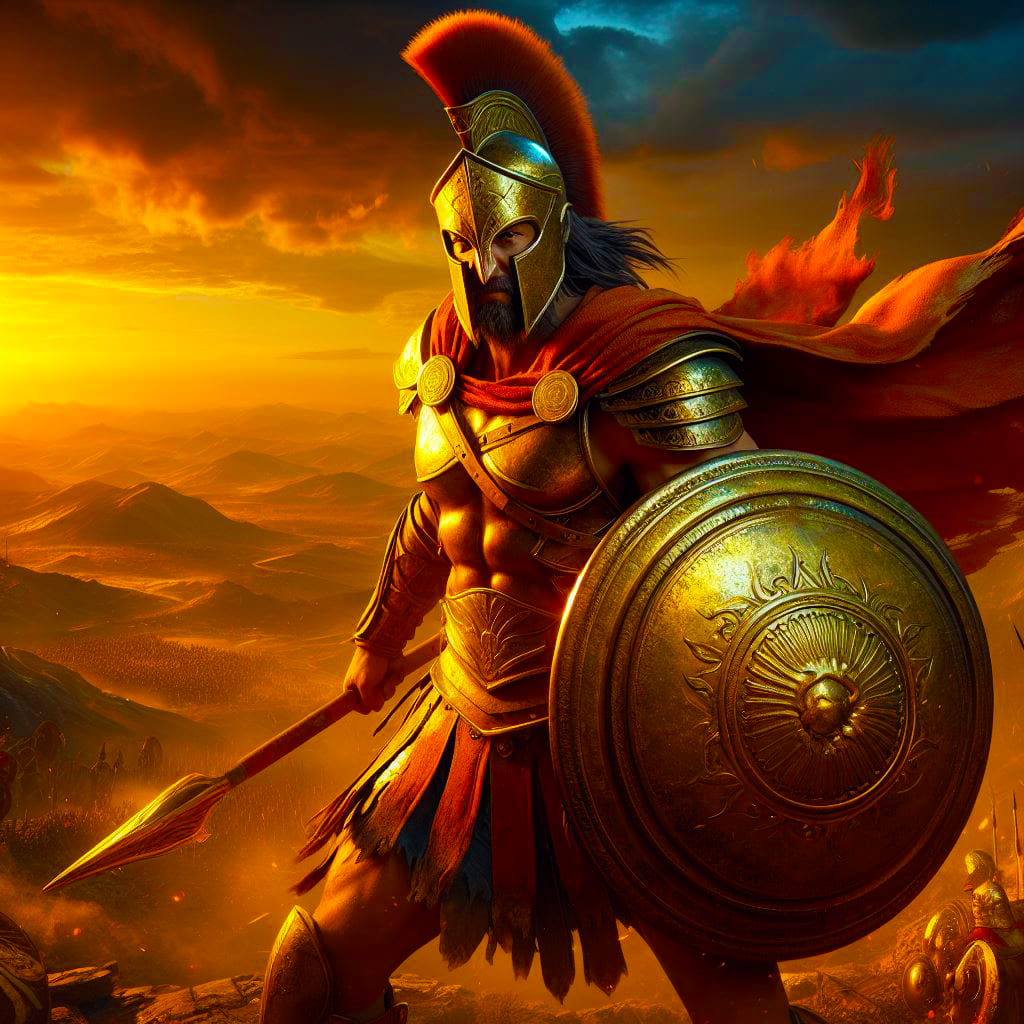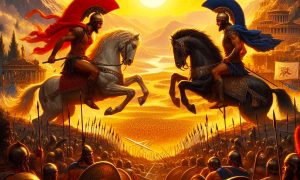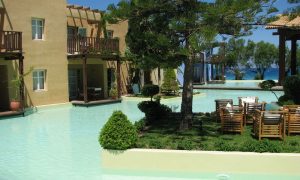Sparta, an ancient city-state in Greece, was once a dominant force in the region. Today, it is a small town with a population of around 16,700 people. Let’s explore 20 interesting facts about Sparta, its culture, and history.
Interesting Facts About Sparta:
1. Education for Spartan Girls
Spartan girls went to school at the age of seven. While their school wasn’t as rigorous as the boys’, they still did athletics and exercise to maintain good health. It was crucial for the women to stay in shape to have strong sons who could fight for Sparta.
2. Army Life for Young Spartans
At the age of seven, young Spartans were taken from their homes to start living in the army. They received rigorous training to prepare them for a life of war.
3. Women’s Rights in Sparta
Women in Sparta had more freedom and education than most of the Greek city-states of that time. They were allowed to own property, run businesses, and participate in athletic events.
4. Harsh Living Conditions
The Spartans lived in harsh conditions without luxuries to make them tough warriors. They were trained to live off the land and survive in challenging environments.
5. Formation of Sparta
Sparta was formed around the 9th century BC. Its power peaked in the 5th century BC but quickly declined. In 272 BC, Sparta was weak and under the control of other world powers.
6. Peloponnesian War
After the Persian Wars, Sparta went to war with Athens in the Peloponnesian War. The two city-states fought from 431 BC to 404 BC, and Sparta was eventually victorious over Athens. Sparta began to decline in the following years and lost the Battle of Leuctra with Thebes in 371 BC but remained an independent city-state until Greece was conquered by the Roman Empire in 146 BC.
7. Military Training for Spartan Citizens
Spartans became soldiers at age 20, citizens at age 30, and retired at age 60. They trained hard to become warriors of the Spartan army.
8. Unique Government System
Sparta had its own system of government, which was very different from other city-states. The government was divided between two kings, the Gerousia, and the Congregation.
9. Physical Fitness for Spartans
Spartans had to be in shape and ready to fight until the age of 60. Their training focused on physical fitness and strength.
10. Fearless and Efficient Warriors
The Spartans were known for being fearless, strong, and efficient warriors. They built their society around military power and domination. The citizens of Athens both feared and praised the strength and military power of the Spartans.
11. Spartan Lifestyle
The term “Spartan” is often used to describe something simple or without convenience. This stems from the lifestyle of the ancient Spartans, who valued discipline and self-control over luxury.
12. Spartan Citizenry
Most Spartan citizens were either perioci, who paid taxes, served in the army, and were protected by Spartan laws, or Iloks, people from the lands conquered and ruled by Sparta, who had no rights.
13. Direct Descendants of Hercules
The Spartans considered themselves direct descendants of the Greek hero Hercules, a source of great pride and inspiration for their military prowess.
14. Spartan Shield
In military art, the Spartans were known for their Spartan shield, which had small holes in the sides through which spears could be hoarded.
15. Laconophilia
Laconophilia is a love or affection for Sparta and Spartan culture. Sparta was often admired. Long ago many of the noblest and best of the Athenians believed that the Spartan state was an almost perfect theory realized in practice.
16. Spartan Land and Helots
Spartan society was based on a class system, with the Spartans at the top and the helots at the bottom. The helots were a group of enslaved people who farmed the land for the Spartans. They had to give half of their crops to their Spartan masters.
17. The Phalanx Formation
The Spartans were famous for their military tactics, particularly their use of the phalanx formation during battles. In this formation, the front row of soldiers would combine their shields to form a wall of armor and shield. They would then move together in unison on command, while the second row used spears.
18. Spartan Government
The Spartan government was unique in that it was ruled by two kings who had equal power. There was also a council of five called the Ephors who guarded the kings. Laws were created by a council of 30 elders, which included two kings.
19. The Battle of Thermopylae
Perhaps the most famous battle involving the Spartans was the Battle of Thermopylae. This battle was fought between the Spartan King Leonidas and the Persian army of Xerxes I during the second Persian invasion. The Persians marched towards Sparta, but Leonidas and his army met them at the pass of Thermopylae. The Spartans held their ground and repelled the Persians for two days. However, on the third day, the Spartans were betrayed by another Greek who informed Xerxes about a route around the pass.
20. The Spartan Diet
The Spartan diet was simple and consisted mainly of barley, wine, and black broth. The black broth was made from boiled pigs’ legs, blood, and vinegar. The Spartans believed that a simple diet would make them stronger and healthier.
The history and foundation of Sparta
Sparta was a city-state located in the southeastern Peloponnese region of ancient Greece. According to legend, Sparta was founded by the descendants of Heracles in the 9th century BCE. The city-state grew to rival the size of other prominent Greek city-states such as Athens and Thebes, and became one of the most powerful city-states in ancient Greece. Sparta was unique in its societal structure, military strength, and austere way of life. The Spartan society was divided into three classes: the Spartans, the perioikoi, and the helots. The Spartans were the ruling class and the only ones who received military training, while the perioikoi were free Greeks who lived in Sparta’s surrounding areas and the helots were the enslaved population.
One of the most well-known aspects of Sparta was its military training. Spartan males were trained for warfare from childhood, with boys beginning their training at the age of seven. The Spartan army was renowned for its discipline, tactics, and power. Soldiers were trained as hoplites, heavily armed foot soldiers, and the Spartan army was known for its skill in on-land combat. The Spartan military was famous for its hoplites, or lightly armored soldiers, who used round shields and spears in a classic phalanx style of warfare. The Spartan military was a defining aspect of the city-state, and their military prowess was feared throughout ancient Greece.
Despite their reputation as a warrior society, Sparta was also home to a rich cultural tradition. Early Sparta was famous not only for its military but also for its music and poetry. Women in Sparta had a surprising amount of freedom compared to other Greek city-states. They were allowed to own property, participate in athletic competitions, and receive an education. However, the Spartan society was also known for its brutal school system and the existence of murderous death squads. Additionally, the Spartan diet was notoriously poor, consisting mainly of black broth and barley. Despite these unique characteristics, Sparta remains a fascinating and influential city-state in ancient Greek history.
The Spartan way of life and social structure
The social structure in Sparta was quite different from that of other Greek city-states. Sparta had two kings from two different families who ruled together, allowing one king to stay home and take care of the city while the other went to war. Additionally, Sparta had a caste system that divided its people into three groups: full citizens, helots (serfs or slaves), and perioeci (neither slaves nor citizens). This unique social structure allowed Sparta to maintain a powerful military force and dominate other city-states in Ancient Greece.
Spartan education and lifestyle were also distinct from other Greek city-states. Spartan education was built around the need for a strong military, with boys being taught how to survive as soldiers and girls also being educated to contribute to society. Spartan lifestyle was also austere, with a focus on discipline, physical fitness, and self-restraint. This way of life was designed to produce strong and capable warriors, and it was highly effective, as evidenced by Sparta’s military success.
Spartan women played a unique role in society, enjoying greater autonomy and rights than women in other Greek city-states. Spartan women were educated and could own land, dress boldly, and were known for their independence. However, this independence was not unlimited, as Spartan women were still expected to contribute to society by producing strong and healthy children. Women in Sparta were also trained in physical fitness and self-defense, much like their male counterparts. Overall, the societal structure and lifestyle in Sparta were highly distinct and contributed to its success as a powerful military force in Ancient Greece.
Interesting facts about Sparta’s culture and legacy
Sparta’s military tactics and achievements are some of the most well-known aspects of its culture and legacy. The Spartan army was renowned for its discipline, training, and tactical skills, which allowed them to achieve numerous victories in battle. The military class of Sparta is famous for having won the Peloponnesian War against Athens, which lasted from 431 to 404 BCE. The Spartans trained from a young age in the disciplines and honor of a warrior society, subjected to military drills and exercises. However, while their tactics were effective, they were not as complex as those of other ancient Greek city-states. Spartan troops drilled relentlessly until they could execute tactics with perfection, which was one of the reasons for their success in battle.
Sparta’s art and culture were also unique and distinctive. While the city-state was centered around loyalty to the state and military, it was not devoid of artistic expression. In fact, it is widely believed that there were more poets in Sparta during the seventh century BCE than in any other Greek city-state. Sparta was known for its pottery and ivory works, with remains of Spartan pottery found in places as far away as Libya in Africa. The warlike nature of Sparta influenced the cultural landscape of the region, but it also allowed for the development of extremely advanced traditional values and customs. The army influenced areas such as education and social structure, as well as being the most important defense of Sparta in both combat and reputation.
Sparta’s influence on modern society is still felt today. The city-state was one of the most dominant of all the Greek city-states and is most often remembered for its athletic and militaristic values. Sparta’s society and politics were heavily influenced by its formidable military, which continues to inspire admiration and fascination in modern times. The peculiar and contrasting militaristic society and caste system of Sparta continue to be studied and analyzed by historians and scholars. Sparta’s legacy has left an indelible mark on Western civilization, from its military tactics to its artistic expression, and its influence remains relevant and significant today.
